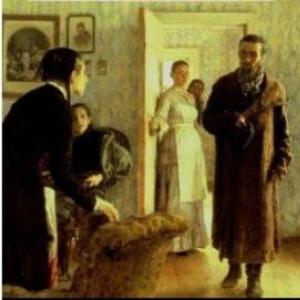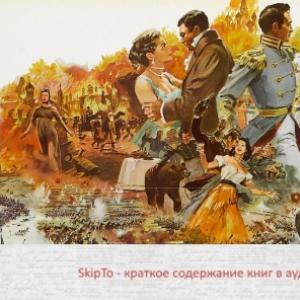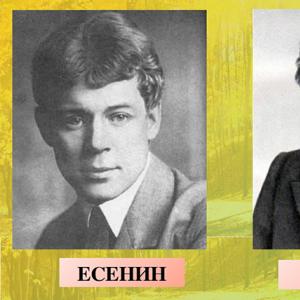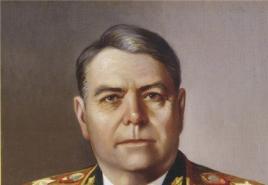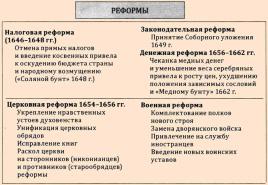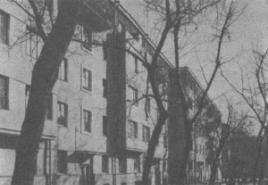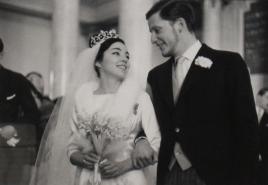Globe - model of the earth. Globe - model of the earth Globe from Lego
Slide 2
Globe history
Globe from the Latin globus means “ball”. A globe is a spherical model of a planet or celestial sphere.
The first terrestrial globe mentioned in literature - the globe of Crates from Pergamum - was made in the 2nd century. BC. However, neither the globe itself nor its image have been found.
Slide 3
The first to survive is considered to be a globe made in 1492 by the German geographer M. Beheim. There was no America on it yet, and the distance between the western coast of Europe and the eastern coast of Asia was half as much as in reality. This model of the Earth was called the “Earth Apple”.
Slide 4
In the XVI-XVII centuries. globes have become very popular. They could be seen in the chambers of monarchs, in the offices of ministers, scientists and merchants. Pocket globes in special cases were intended for travel.
Speaking about the history of the creation of globes, one cannot fail to mention the giant globes. One of them - a planetarium globe with a diameter of 3.1 m and a weight of 3.5 tons - is located in St. Petersburg in the Museum of M.V. Lomonosov. It was made by the famous European geographer A. Olearius (1599-1671) and master A. Bush in 1650-1664. for Duke Frederick III.
Slide 5
Giant globes
It was created as a planetarium globe. It was painted on the outside - an image of the earth's globe, on the inside - a starry sky with all the constellations. The planetarium globe rotated using a water wheel and a hydraulic drive, making one revolution per day. A quadrangular door led inside the ball.
Slide 6
The idea of creating giant globes does not leave architects and engineers. In Italy, a 10-meter rotating “Globe of the World” weighing 3.5 tons was built, and in New York, at the 1964 World Exhibition, the world’s largest globe, the Unisphere, was demonstrated. A steel ball with a diameter of 37 m weighed more than 400 tons.
Slide 7
There is an unusual attraction in New York's Crown Park.
Slide 8
GlobodeEricsson is the largest model of the solar system, located in Stockholm.
Slide 9
Eartha
Eartha (as the globe is called) is exactly a million times smaller than the original, and every inch of its surface corresponds to 26 kilometers of the real Earth. The globe accurately reflects the earth's topography and the location of major transport routes and populated areas.
Slide 10
There are also such unusual globes
Slide 11
Lego globe
Slide 12
Mapparium
Boston's Merry Baker Eddy Library has a giant glass ball, the Mapparium. The inner walls of the ball represent a giant political map of the world with sparkling colored lighting and city lights. Globe from the inside.
Slide 13
Equator and meridians
When studying our planet, you should know some concepts.
Determining the main question of the lesson I think that there are still similarities. Pay attention to the form. I think that the globe is not very similar to the Earth, because it is very small and made of a different material. Who is right? What is the question? What is a globe and how is it similar to Earth?


Collaborative Discovery of Knowledge Look at the globe. Is it similar to Earth in everything? What is shown in blue on the globe? What is shown in other colors? What is shown in blue on the globe? What is shown in other colors? The coloring of the globe shows where the surface of the Earth is covered with water, where there is land, mountains and rivers.

The globe stands on a leg and can be rotated. There is a pin inside that helps make the movement. The globe is tilted. A grid is drawn on the globe. Joint discovery of knowledge How does the model of the Earth - the globe - differ from the planet Earth? Why do you think the model of the Earth - the globe - was made rotating? The earth rotates around its axis. We don’t notice this, because it rotates without jolts or stops, together with us and with all the objects on it. We notice the rotation of the Earth by looking at the celestial bodies: the Sun, Moon and stars. It seems to us that they are floating across the sky in one direction, like the houses and trees outside the train window.



Collaborative discovery of knowledge Find the lines on the globe connecting the two poles. These are meridians. They stretch from north to south. Find the lines on the globe that intersect the meridians. These are parallels. They run from west to east. meridians parallels What is the longest parallel called? equator

Shared discovery of knowledge Parallels, meridians, equator and poles are imaginary lines and points. They are not marked in any way on the surface of the Earth. Parallels, meridians, equator and poles are imaginary lines and points. They are not marked in any way on the surface of the Earth. The equator divides the Earth into hemispheres: Northern and Southern. Northern Hemisphere Southern Hemisphere



Globe - model of the Earth Methodological goal of the lesson. Methodological purpose of the lesson. To introduce the methodology for organizing educational research. To introduce the methodology for organizing educational research. The purpose of the lesson. Develop students' research skills and develop primary skills in conducting independent research. The purpose of the lesson. Develop students' research skills and develop primary skills in conducting independent research. Lesson objectives. Lesson objectives. Formation of skills to work with information. Formation of skills to work with information. Formation of interaction skills in a group. Formation of interaction skills in a group. Development of creative, critical thinking, broadening the horizons of students. Development of creative, critical thinking, broadening the horizons of students. Fostering purposefulness, independence, and initiative. Fostering purposefulness, independence, and initiative. Equipment: globes, teawords for each group. Equipment: globes, teawords for each group.
What is the project method What is the project method The project method is a learning model that involves the student in the process of solving complex problems. The project method is a learning model that involves the student in the process of solving complex problems. Projects are based on questions the answers to which cannot be obtained by rote learning. Projects put the student in an active position - a person who explores, solves problems, makes decisions, studies, documents his activities. Projects serve distinct, meaningful learning purposes; they are not just add-ons and add-ons to the “real” curriculum. Projects are based on questions the answers to which cannot be obtained by rote learning. Projects put the student in an active position - a person who explores, solves problems, makes decisions, studies, documents his activities. Projects serve distinct, meaningful learning purposes; they are not just add-ons and add-ons to the “real” curriculum. A project is simply another form of educational organization in which the teacher acts as a consultant and assistant in finding resources, and students have to independently conduct real research, look for answers to real life questions and present concrete results of their work. A project is simply another form of educational organization in which the teacher acts as a consultant and assistant in finding resources, and students have to independently conduct real research, look for answers to real life questions and present concrete results of their work. It is because of the active role of the student that projects are so popular with students. It is because of the active role of the student that projects are so popular with students.

Interaction between teacher and student The teacher acts as an organizer of activities, a consultant in finding the necessary information from various sources (archives, the Internet, interviewing). The teacher’s task is to analyze the degree of completion of the project, advise on the content and design of teaching aids, and the choice of the layout of Web pages.. Students accept decisions about the management and content of their projects, they will be provided with resources to help them make rational decisions, be responsible for the final product, and defend this material at a scientific and practical conference at school or in the city. Children will learn to understand where and how the knowledge they have acquired can be applied in the reality around them.



The globe depicts oceans and continents, seas, rivers and lakes, cities. The globe depicts oceans and continents, seas, rivers and lakes, cities. We found the city of Moscow. We found the city of Moscow. Find and show continents and oceans on the globe. Find and show continents and oceans on the globe. Independent work in groups. Independent work in groups.

Look at the drawing. What lines are there on the globe? Look at the drawing. What lines are there on the globe? There is an equator on the globe. Why do we need an equator? There is an equator on the globe. Why do we need an equator? The equator is a line, a curve, bright blue. Divides the globe in half - So that we don’t suddenly confuse where is North and where is South. The equator is a line, a curve, bright blue. Divides the globe in half - So that we don’t suddenly confuse where is North and where is South. The Equator divides the Earth into the Northern and Southern Hemispheres. Show them on the globe. The Equator divides the Earth into the Northern and Southern Hemispheres. Show them on the globe. There is also the North Pole and the South Pole. There is also the North Pole and the South Pole. The globe also has horizontal and vertical lines. The globe also has horizontal and vertical lines. These are parallels and meridians. These are parallels and meridians. There is an Earth's axis, not yet visible to us, around which the Earth rotates. There is an Earth's axis, not yet visible to us, around which the Earth rotates. Rotate the globe around the Earth's axis. Who remembers what happens as a result of the Earth's rotation around its axis? Rotate the globe around the Earth's axis. Who remembers what happens as a result of the Earth's rotation around its axis? There is a change of day and night. There is a change of day and night.

Chinaword "Globe" Write the geographical names in the boxes: 1. Equalizer. The line dividing the Earth into two hemispheres (Northern and Southern). 2. Source of fresh water. 3. The southernmost continent. 4. Continent, similar to the sole. 5.A continent consisting of two parts (North and South). 6. Mainland of the Southern Hemisphere. Practical work:

Answers South Pole Equator Earth's axis North Pole Number in the picture Look at the picture. Fill out the table.

Reflection - What can you praise yourself for? D. Our group worked very friendly. We solved the Chinaword correctly. It was very interesting to listen to the guys' stories about different globes. - What didn’t you like, remained unclear, caused boredom? -What would you like to know more about? - Where can information gathering skills be useful? - Well done boys. Thank you for the lesson.


